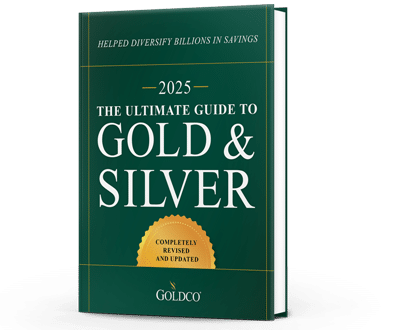6 Indicators of a Potential Recession
It seems that in the media today there are more and more mentions of the dreaded R-word: recession With growing economic uncertainty, the threat of potential recession seems to be growing as...
Economy

Unlike gold, silver normally sees most of its demand coming from industrial uses. That can change somewhat during times of financial crisis, when investment demand picks up, but normally industrial use makes up at least half of silver demand.
Historically silver was used in the photographic industry as a component of photographic film. As film cameras went the way of the dodo, one of silver’s main industrial uses declined, helping to send the silver price into a downward spiral. But that’s changing.
Silver is a key component in photovoltaic cells that make up solar panels, and as demand for solar panels has increased, so has demand for silver. Whereas solar panels were responsible for 5% of silver demand in 2014, that is projected to reach 14% this year. And that could grow even higher.
That’s all well and good for silver, but the question for silver investors is, how can they benefit from this increasing industrial demand for silver?
It’s perhaps fitting that the silver used in solar panels is normally in paste form, as silver is setting up for a unique squeeze. Not only is silver demand from the photovoltaic industry climbing, but silver demand from investors has rocketed upward in recent years as well.
Between the bank failures that occurred earlier this year and the ongoing threat of recession, investment demand for silver is at record highs right now. Total silver demand in 2022 was over 1.2 billion ounces, with investment demand making up 332 million ounces of that.
Silver investment demand is more than double what it was in 2018, and the forecast for 2023 is for investment demand to remain elevated, if a little off the record highs. What would be really interesting to see is how investment demand for silver might spike if the much feared recession were to come to fruition this year. An October surprise could very well push silver demand even higher if nervous investors decide that they need to protect themselves with silver.
Photovoltaic demand for silver has seen similar growth to investment demand, and is up over 50% since 2018 and expected to grow a further 15% this year. This tremendous increase in silver demand means that silver supply can’t keep up.
This year is expected to be the fifth consecutive year in which overall silver demand outstrips silver supply. If this kind of trend continues, the price of silver will have to rise to equilibrate supply and demand, particularly if above ground stocks of silver eventually dry up.
This is why so many silver analysts are so bullish about the long-term prospects of silver. With increasing demand from photovoltaics, increasing investor demand, and the possibility of a major recession ahead, the stage is being set for silver to really shine.
This wouldn’t be the first time that silver has reacted to a time of crisis by going on a tear. During the 1970s, silver’s average annualized growth over the course of the decade was over 30%. A 30% growth rate is great for a single year, but to keep up that kind of growth for over a decade is almost unheard of.
The 1970s, of course, were a decade of stagflation, and many market watchers are warning that the next decade here in the US could similarly be one of stagflation. With the Federal Reserve struggling against stubborn inflation, stagflation could end up returning.
While the Fed is tightening monetary policy right now, but also potentially needing to open the monetary spigots if the economy falls into recession, the next decade could be marked by a yoyoing cycle of tightening and loosening, with inflation rising or falling depending on the Fed’s monetary policy du jour. We saw that in the 1970s, with inflation rising and falling several times over the course of the decade, while the Fed was never able to fully slay that dragon.
Many Americans who have already bought silver are undoubtedly hoping for silver to make a repeat of its 1970s performance if the US economy falls into stagflation today. Even a growth rate half of what silver did in the 1970s would give silver owners pretty phenomenal gains.
Closer to our own time, silver showed amazing performance in the aftermath of the 2008 financial crisis, more than quintupling in price between 2008 and 2011. So it’s no wonder that so many people who saw silver turn in that kind of performance 12-15 years ago are turning to silver now to try to protect their wealth.
The options available for those looking to buy silver today are far greater than they were during the 1970s. One option in particular that has been developed since that time is a silver IRA.
A silver IRA allows you to roll over funds from existing tax-advantaged retirement accounts such as a 401(k), 403(b), IRA, TSP, or similar account into an IRA that buys and owns physical silver coins and bars. This rollover can occur tax-free, allowing you to use your retirement savings to buy silver without having to take a tax hit by liquidating any of your tax-advantaged funds.
If you’d rather use cash to purchase silver rather than using your retirement savings, that’s an option too. No matter which option you choose, Goldco has silver options available for you.
With over $2 billion in precious metals placements and thousands of satisfied customers, Goldco works hard to ensure that its customers gain the benefits of owning physical silver. If you’re interested in protecting your savings with silver, call Goldco today to learn more about the many benefits of owning physical silver.

